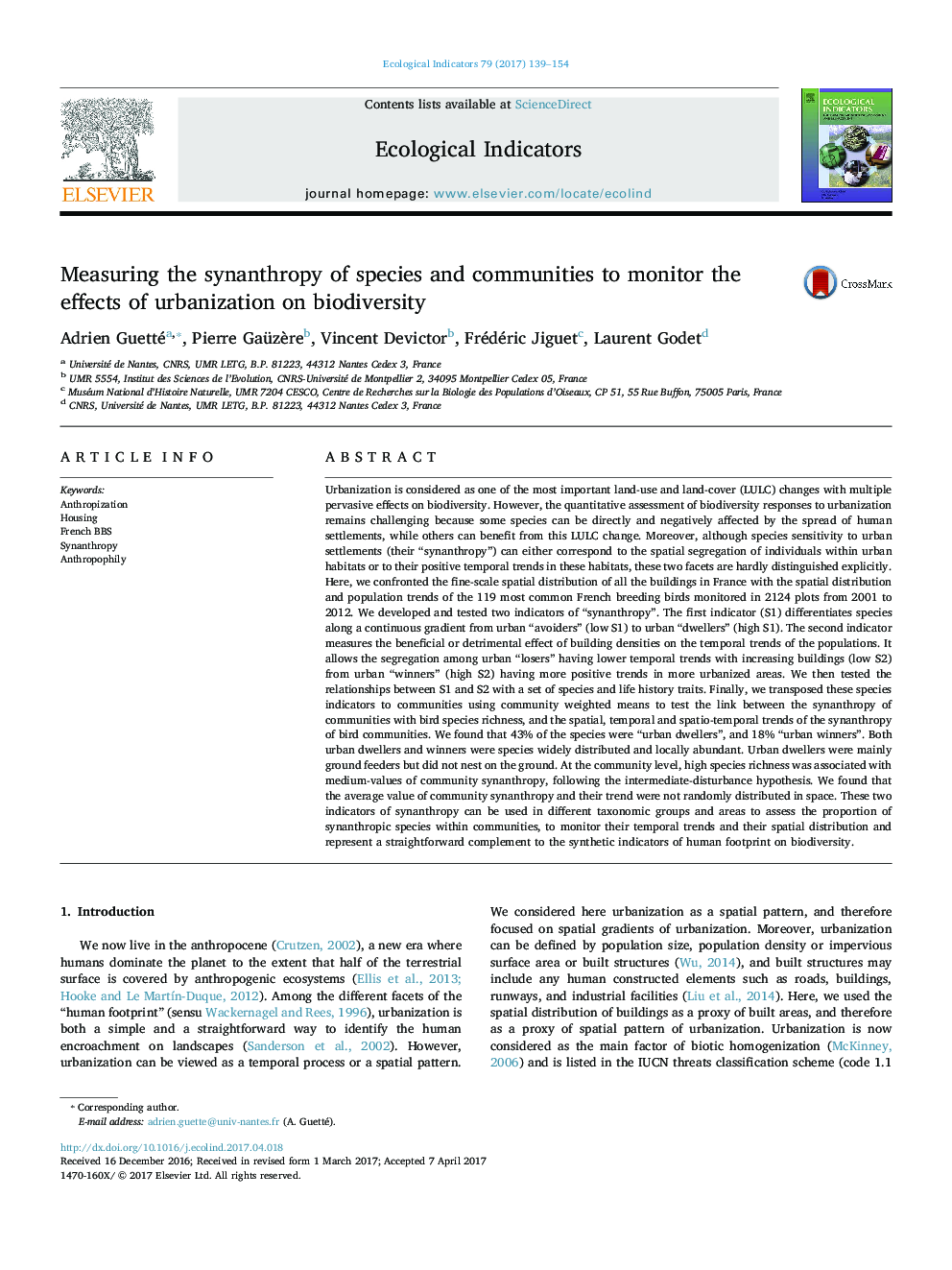| کد مقاله | کد نشریه | سال انتشار | مقاله انگلیسی | نسخه تمام متن |
|---|---|---|---|---|
| 5741762 | 1617123 | 2017 | 16 صفحه PDF | دانلود رایگان |
عنوان انگلیسی مقاله ISI
Measuring the synanthropy of species and communities to monitor the effects of urbanization on biodiversity
ترجمه فارسی عنوان
اندازه گیری هماهنگی گونه ها و جوامع برای کنترل اثرات شهرنشینی بر تنوع زیستی
دانلود مقاله + سفارش ترجمه
دانلود مقاله ISI انگلیسی
رایگان برای ایرانیان
کلمات کلیدی
موضوعات مرتبط
علوم زیستی و بیوفناوری
علوم کشاورزی و بیولوژیک
بوم شناسی، تکامل، رفتار و سامانه شناسی
چکیده انگلیسی
Urbanization is considered as one of the most important land-use and land-cover (LULC) changes with multiple pervasive effects on biodiversity. However, the quantitative assessment of biodiversity responses to urbanization remains challenging because some species can be directly and negatively affected by the spread of human settlements, while others can benefit from this LULC change. Moreover, although species sensitivity to urban settlements (their “synanthropy”) can either correspond to the spatial segregation of individuals within urban habitats or to their positive temporal trends in these habitats, these two facets are hardly distinguished explicitly. Here, we confronted the fine-scale spatial distribution of all the buildings in France with the spatial distribution and population trends of the 119 most common French breeding birds monitored in 2124 plots from 2001 to 2012. We developed and tested two indicators of “synanthropy”. The first indicator (S1) differentiates species along a continuous gradient from urban “avoiders” (low S1) to urban “dwellers” (high S1). The second indicator measures the beneficial or detrimental effect of building densities on the temporal trends of the populations. It allows the segregation among urban “losers” having lower temporal trends with increasing buildings (low S2) from urban “winners” (high S2) having more positive trends in more urbanized areas. We then tested the relationships between S1 and S2 with a set of species and life history traits. Finally, we transposed these species indicators to communities using community weighted means to test the link between the synanthropy of communities with bird species richness, and the spatial, temporal and spatio-temporal trends of the synanthropy of bird communities. We found that 43% of the species were “urban dwellers”, and 18% “urban winners”. Both urban dwellers and winners were species widely distributed and locally abundant. Urban dwellers were mainly ground feeders but did not nest on the ground. At the community level, high species richness was associated with medium-values of community synanthropy, following the intermediate-disturbance hypothesis. We found that the average value of community synanthropy and their trend were not randomly distributed in space. These two indicators of synanthropy can be used in different taxonomic groups and areas to assess the proportion of synanthropic species within communities, to monitor their temporal trends and their spatial distribution and represent a straightforward complement to the synthetic indicators of human footprint on biodiversity.
ناشر
Database: Elsevier - ScienceDirect (ساینس دایرکت)
Journal: Ecological Indicators - Volume 79, August 2017, Pages 139-154
Journal: Ecological Indicators - Volume 79, August 2017, Pages 139-154
نویسندگان
Adrien Guetté, Pierre Gaüzère, Vincent Devictor, Frédéric Jiguet, Laurent Godet,
